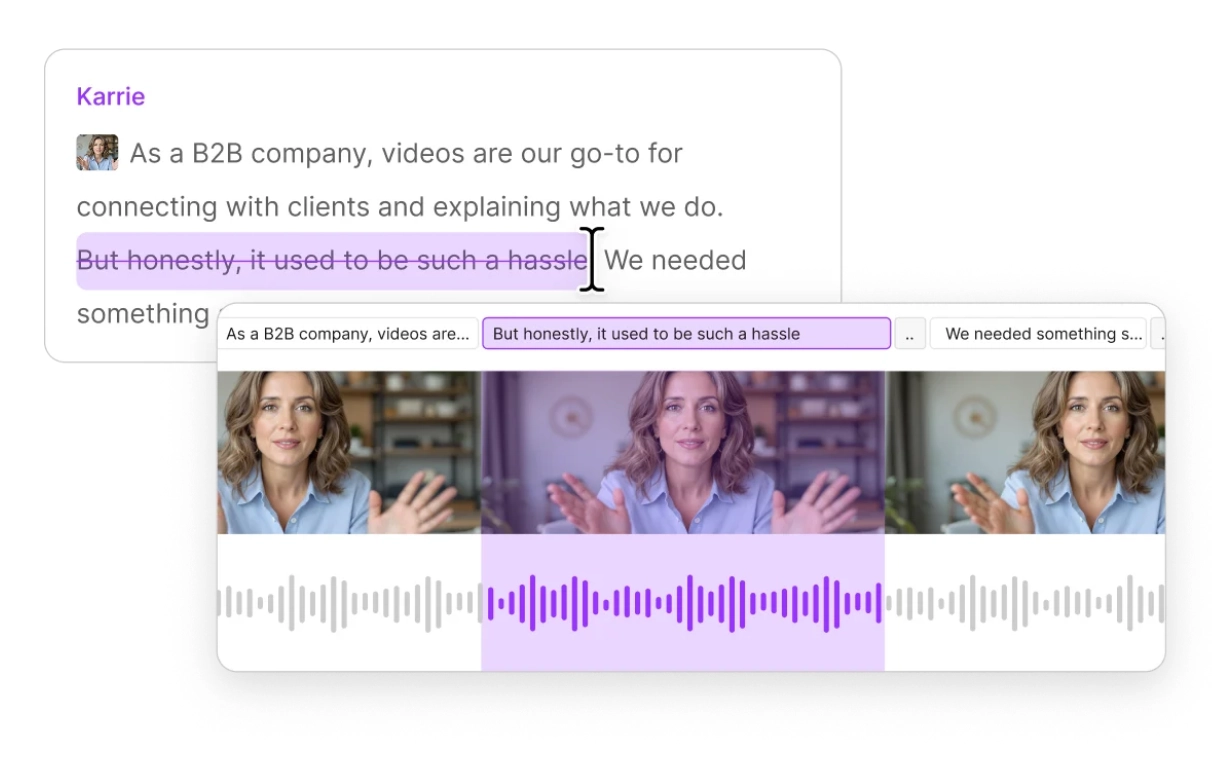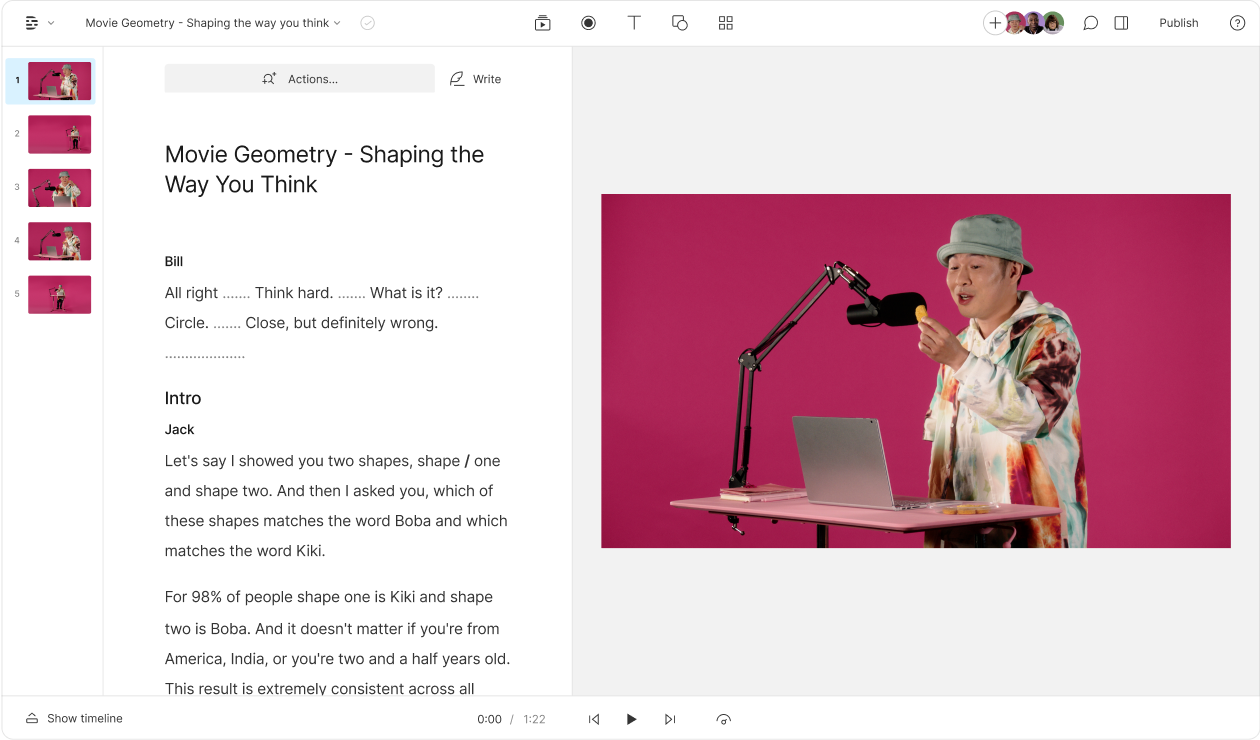What type of content do you primarily create?




Video is no longer optional. It’s become essential to how modern organizations communicate, compete, and grow. From public campaigns that spread the word to internal messages that keep teams on the same page, video is now the backbone of business operations.
So why are so many enterprise content teams still using editing tools that feel like they were designed a decade ago for one person in a spare room? The answer is usually a mix of habit, cost, and "good enough for now." But the reality is that these tools are slowing teams down and quietly draining time, money, and creative energy.
The real price of outdated workflows
On the surface, that old editing software seems cheap and familiar. In practice, it’s costing more than most teams realize.
- Lost hours. Every clunky menu, every manual task, and every "wait, which version is this?" moment steals time from meaningful work.
- Slow launches. A campaign that should go live in days slips into weeks. Momentum fades and opportunities disappear.
- Frustrated talent. Editors and strategists don’t want to wrestle with outdated software—they want to create. If they can’t do that, they’ll eventually go where they can.
- Financial drag. Tools that seem inexpensive up front often end up costing more through lost productivity and higher turnover.
Inefficiency doesn’t just slow things down. It undermines creativity, morale, and growth.
Why most editing tools don’t scale
Most editing platforms were built for individual creators. They work fine for someone producing content alone, but they start to crack under the weight of a large team and a complex content strategy.
Collaboration doesn’t work. Version control becomes a guessing game. They don’t have the right integrations, so teams waste time switching between disconnected tools. What should be a smooth workflow turns into a tangle of workarounds that can’t keep up with enterprise needs.
What modern tools should deliver
A modern video editing platform should do more than help you make content. It should help your team work together more efficiently and with less friction. At a minimum, look for these qualities:
- Cloud-first access: Work from anywhere without passing around massive files.
- Real-time collaboration: Everyone can see, comment, and edit in one shared space.
- AI-powered automation: Routine tasks like transcription happen automatically, freeing up time for creativity.
- Enterprise-grade security: Compliance and data protection are built in, not added later.
- Scalability: The platform grows with your team and your content goals.
How Descript fits in
Descript was built for the way enterprise content teams actually work. It’s more than a video editing tool—it brings video editing, audio editing, and transcription together in one collaborative platform.
- All-in-one editing: Everything you need lives in one place.
- Collaboration-first: Real-time comments, edits, and reviews keep everyone aligned.
- Built to scale: From small teams to global organizations, Descript adapts to your needs.
- Seamless integrations: It connects easily with the tools you already use.

The result is editing that not only keeps up with enterprise demands but helps teams move faster and work smarter.
Inefficiency costs more than you think
Outdated editing tools aren’t just costing you lost hours and delayed campaigns. They’re leading to missed opportunities, frustrated employees, and creative potential that never gets realized.
Upgrading to a platform that matches the way your team works is a strategic investment in productivity and growth.
Ready to see what a modern editing workflow looks like? Talk to a Descript enterprise expert and discover how your team can work better, faster, and more collaboratively.























%201.svg)





